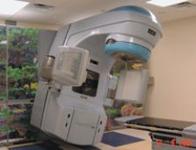
July 21, 2010 – While four in 10 clinicians use frameless radiosurgery exclusively to treat cranial indications, user data collected at the 5th International Conference of the Novalis Circle, held last month in Munich, Germany, shows that there are still significant opportunities to increase utilization of the effective treatment approach.
While many theories exist as to why some clinicians have not expanded use of frameless radiosurgery in treating cranial indications, neurosurgeon Surbhi Jain, M.D., Moffitt Cancer Center in Tampa, Fla., believes low utilization can be attributed to an overall lack of awareness of the extent frameless radiosurgery can effectively treat even the most sensitive regions of the brain.
Jain resolved her initial concerns over the safety, effectiveness and accuracy of frameless radiosurgery through on-site visits to hospitals that adopted the technique. She began treating patients framelessly in January 2008 using the Novalis Tx radiosurgery platform. In her 2010 independent study entitled “Control of Brain Metastases in the Eloquent Brain Using Stereotactic Radiosurgery,” Jain compared the effectiveness of both framed and frameless radiosurgery. She found that metastatic tumors could be controlled as effectively framelessly as using the more invasive head frame, which must be secured to the skull and removed between treatments.
“We were extremely encouraged to find a noninvasive treatment that can produce a tumor control rate of 95 percent in an extremely sensitive part of the brain, which controls speech, motor function and senses,” Jain said. “The data validate frameless radiosurgery as a safe, precise approach to treatment and make a strong case for increased use among clinicians.”
Antonio De Salles, M.D., head of the Stereotactic Surgery Section at University of California – Los Angeles, and Joseph Chen, M.D., a neurosurgeon at Kaiser Permanente in Los Angeles, Calif., both made their transitions to frameless radiosurgery after conducting thorough scientific verifications of the precision of the technique. They have now widely adopted the technique and are applying protocols to treat more than 99 percent of their patients framelessly.
“Most neurosurgeons were taught to treat patients with the stereotactic frame, because of its perceived accuracy,” De Salles said. “Having treated nearly 1,000 patients with frameless radiosurgery over the past few years, I can say that the noninvasive approach is as safe and accurate as frame-based treatment because we are able to constantly monitor the positions of both the treatment beam and patient.”
De Salles and his team are so confident in frameless radiosurgery that they treat patients with trigeminal neuralgia, which involves delivering highly focused beams of radiation to a segment of the trigeminal nerve, measuring 2 to 4 mm long and less than 1 mm wide, where it exits the brain stem. Treatment with radiosurgery creates a lesion in the root of the nerve over time and interrupts the pain transmission.
Chen, a co-investigator of a 2009 study entitled “Control of Brain Metastases Using Frameless Image-Guided Radiosurgery,” appreciates the treatment flexibility frameless radiosurgery can provide.
“The ability to decouple phases of the treatment process, like imaging, treatment planning and dose delivery, is very beneficial to both patients and clinicians,” Chen said. “Because preparation work can be done prior to the day of treatment, patients are able to receive treatment in a time-efficient manner, which allows us to increase the volume of patients we see.”
Jain is encouraged by the growth of frameless radiosurgery in treating brain metastases, but suggests that increased utilization could lead to an even greater impact on patients.
“We are seeing new applications of frameless radiosurgery emerging frequently, and our findings show that it is as effective, safe and accurate as the framed approach,” she said. “As research continues to be released and treatment protocols are established and shared among members of the medical community, I hope that we can continue to increase the extent in which frameless radiosurgery impacts people’s quality of life.”
For more information: www.brainlab.com


 December 11, 2025
December 11, 2025 









